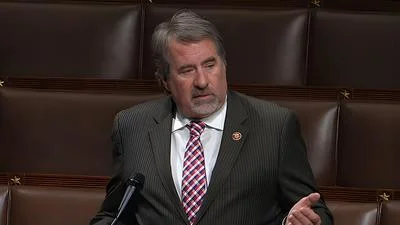A former commander of the U.S. Pacific Command recently discussed how the AUKUS defense agreement between the U.S., U.K. and Australia will affect relations in the Indo-Pacific region during a panel hosted by the Center for Strategic and International Studies (CSIS) International Security Program and the U.S. Naval Institute.
Retired Navy Admiral Harry Harris Jr. discussed developments and changes related to AUKUS with Seth G. Jones, CSIS senior vice president and director of the International Security Program.
The AUKUS pact, which was first announced in 2021, is aimed at countering China’s military threat in the Indo-Pacific region, Reuters reported. The defense will include Australia purchasing up to five nuclear-powered submarines from the U.S. As part of Australia's largest defense project ever, at least one U.S. submarine will visit Australian ports in the coming years, with several deployed by the U.S. in Australia, tentatively in 2027. In the early 2030s, Australia will purchase three of the submarines with an option to purchase two more.
Selling a Virginia-class submarine will not create a deficit for the U.S. because Australia has an interest in a free and open ocean, making China’s potential aggression against Taiwan a lot less appealing, he said.
“I will note that India not only has nuclear weapons but also has nuclear submarines," Harris said. "So I believe that India would welcome Australian nuclear submarines as another force for stability in good in the Indian Ocean and beyond."
The U.S. relationship with Australia, the U.K. and other allies in the Pacific stands on its own merits, Harris said.
"I believe that those relationships will strengthen stability," he said.
AUKUS has three pillars and the first began with training Australian sailors in the U.S. nuclear power program.
The number of visits to Australian ports will increase, with the U.S. eventually staging submarines out of those ports, he said.
The second pillar commits the U.S. to sell Virginia-class submarines.
“And this is really remarkable when you think about it because we are going to share our crown jewel, our nuclear submarine program with Australia,” Harris said.
By the early 2040s, Australia will have the industrial base and the workforce to build its own nuclear submarine, he said.
“One of the main issues is training the industrial base to build and operate nuclear submarines to go from zero to warp speed in a decade or so,” he said.
Harris said that through the International Trade and Arms Regulations (ITAR), the U.S. limits sharing technologies – even with allies. To share with Australia the knowledge needed to build the nuclear submarines will require a change in ITAR.
“I made that pitch to the House Armed Services Committee last month,” Harris said.
An April 2022 White House fact sheet said that in addition to the submarine deal, an AUKUS agreement priority is to develop advanced technologies to help promote peace in the Indo-Pacific region. These advancements are expected to include autonomous undersea vehicles, quantum technologies, artificial intelligence (AI), and cybersecurity for communications and intelligence operations.









